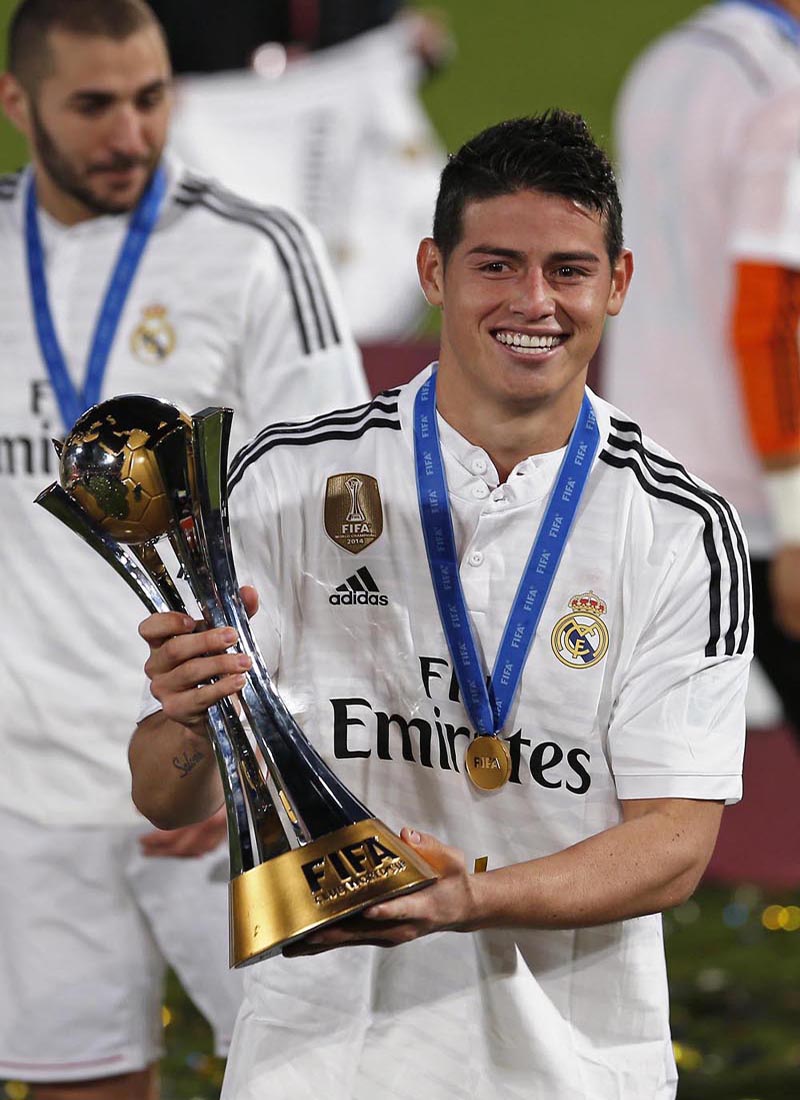Football (soccer) is a matter of life and death, except more important. – Bill Shankly
The 2014 World Cup had many images and storylines that were etched in our mind, yet perhaps one of the biggest was the continuing emergence of Colombian midfielder James Rodriguez.
It just wasn’t his near mid-field goal strike against Uruguay in the second round or wearing the No. 10 number of legendary Carlos “El Pibe” Valderrama. Rodriguez helped the Colombian national team post its best showing, leading them to the quarterfinals before they fell to host nation Brazil 2-1. On the way there, he earned the tournament’s Golden Boot award for most goals scored in two less games and shots. Argentina legend Diego Maradona even argued that Rodriguez should have won the tournament’s Golden Ball award instead of Lionel Messi.
Of course, all the international accolades and the admiration of other players didn’t seem to help swallow such a tough exit from the world’s biggest tourney. Even if it was the first time in nearly two dozen years that the team had made it past group play and the round of 16. Not at first, “the truth is that having so many superstars hugging me did make me happy,” Rodriguez told the media after being consoled by the loss by a number of players, including Brazil’s David Luiz. “We are sad because we wanted to keep going and set new records. We gave everything to reach the semi-final, but we have to be proud because we played a great side.”
For those who had seen “Hamez” play since his youth days, the performance was just one more step in the path of success that he had laid down. The Cúcuta-born native of Ibagué had been impressing players and fans alike since he was 13, when his corner kick secured his team’s victory in the country’s premier youth tournament, the Pony Fútbol championship. Four years later, being the youngest foreign player to play in Argentinian first division didn’t stop him from leading the club to their first league championship. Soon after, he would lead the Colombian national team’s under 20 squad to wins in 2011 Toulon tournament and a quarterfinal finish in the Youth World Cup. All these while helping Monaco’s Porto squad capture three consecutive titles in the Europa League. Was it any wonder why Real Madrid paid the fourth highest transfer fee in history to have him play the Champions League, making him one of the highest paid players in the world? Coaches and players agree – the former stutter’s mix of passion, discipline and fancy footwork makes him one of the game’s rising stars. His growing legion of fans, a millennial’s adeptness at social media and a love for all things family (he kisses the tattoo of his daughter’s name after every goal) makes him an admired global superstar.
With his first World Cup experience behind him, the 23-year old husband and father now sets his sights on helping to secure a Champions League crown this season and preparing for 2016, which includes both an 100th Anniversary edition of the COPA America tournament and the Olympics.
Just one more opportunity to witness the evolution of one of the world’s best athletes into his sports’ pantheon of other first name greats.

